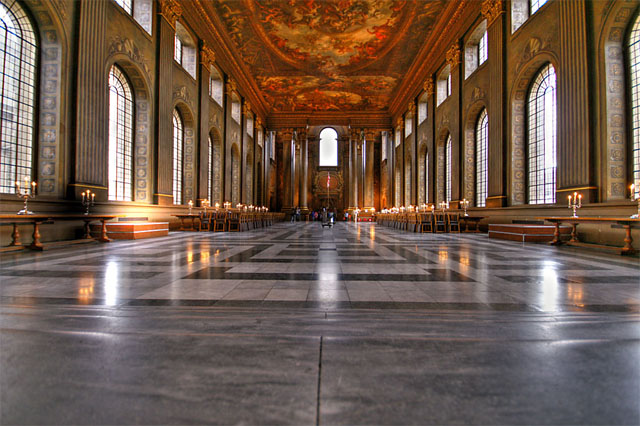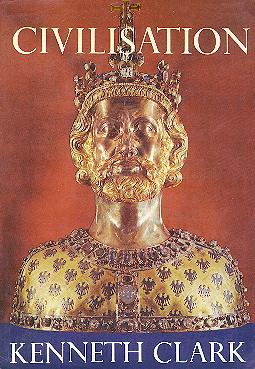For an introduction to these series, see here.
Below, some excerpts of “The Light of Experience,” the eight chapter of Civilisation by Kenneth Clark.
Ellipsis omitted between unquoted passages:
I am in Holland not only because Dutch painting is a visible expression of this change of mind [the revolution that replaced divine authority by experience, experiment and observation], but because Holland—economically and intellectually—was the first country to profit from the change. When one begins to ask the question, ‘does it work?’ instead of ‘is it God’s will?’ one gets a new set of answers, and one of the first of them is this: that to try to suppress opinions which one doesn’t share is much less profitable than to tolerate them.
Nearly all the great books which revolutionised thought were first printed in Holland. What sort of society was it that allowed these intellectual time-bombs to be set off in its midst? Inside the old almshouse of Haarlem, which is now a picture gallery, there is plenty of evidence. We know more about what the seventeenth-century Dutch looked like than we do about any other society, except perhaps the first-century Romans. Each individual wanted posterity to know exactly what he was like.
One can’t imagine groups like this [Rembrandt’s Syndics] being produced in Spain or seventeenth-century Italy, even in Venice. They are the first visual evidence of bourgeois democracy. Dreadful words—so debased by propaganda that I hesitate to use them. Yet in the context of civilisation they really have a meaning. They mean that a group of individuals can come together and take corporate responsibility; that they can afford to do so because they have some leisure; and that they have some leisure because they have money in the bank.
Amsterdam was the first centre of bourgeois capitalism, the chief banking centre of Europe. I don’t say much about economics in this book chiefly because I don’t understand them—and perhaps for that reason believe that their importance has been overrated by post-Marxist historians. But, of course, there is no doubt that at a certain stage in social development fluid capital is one of the chief causes of civilisation because it ensures three essential ingredients: leisure, movement and independence.
♣
In studying the history of civilisation one must try to keep a balance between individual genius and the moral or spiritual condition of a society. However irrational it may seem, I believe in genius. I believe that almost everything of value which has happened in the world has been due to individuals.
Nevertheless, one can’t help feeling that the supremely great figures in history—Dante, Michelangelo, Shakespeare, Newton, Goethe—must be to some extent a kind of summation of their times. They are too large, too all-embracing, to have developed in isolation.
Rembrandt is a crucial instance of this conundrum. It is very easy—indeed rather more convenient for the historian—to imagine Dutch art without him; and there was no one else in Holland remotely comparable to him—nothing like the group of poets and dramatists who preceded and accompanied Shakespeare. Yet the very fact that Rembrandt was so immediately and overwhelmingly successful, and went on being successful—his etchings and drawings never went out of fashion—and that for twenty years almost every Dutch painter was his pupil, shows that the spiritual life of Holland needed him and so had, to some extent, created him.
However, any attempt to relate art to society gets one into a false position. The greatest of all pictures based on the facts of vision wasn’t painted in the scientific atmosphere of Holland, but in the superstitious, convention-ridden court of Philip IV of Spain: Las Meninas, ‘The Ladies in Waiting’, which was painted by Velasquez about five years before Vermeer’s finest interiors.
The enlightened tidiness of Hooch and Vermeer and the rich imaginative experience of Rembrandt reached their zenith about 1660. During that decade the leadership of intellectual life passed from Holland to England. Towering above all these remarkable scientists [Boyle, Hooke, Halley, Wren] was Newton, one of the three or four Englishmen whose fame has transcended all national boundaries. I can’t pretend that I have read the Principia, and if I did I wouldn’t understand it any more that Samuel Pepys did when, as President of The Royal Society, it was handed to him for his approval. One must take on trust that it gave a mathematical account of the structure of the universe which for three hundred years seemed irrefutable. It was both the climax of the age of observation and the sacred book of the next century.
♣
What is civilisation? A state of mind where it is thought desirable for a naval hospital to look like this and for the inmates to dine in a splendid decorated hall.
 Painted Hall
Painted Hall
Royal Hospital
Greenwich, London
The strange thing is that none of the nineteenth-century writers (except Carlyle and Ruskin) seemed to notice that the triumph of rational philosophy had resulted in a new form of barbarism. If, from the balcony of the Greenwich Observatory, I look beyond the order of Wren’s hospital I see, stretching as far as the eye can reach, the squalid disorder of industrial society. It has grown up as a result of the same conditions that allowed the Dutch to build their beautiful towns and support their painters and print their works of philosophers: fluid capital, a free economy, a flow of exports and imports, a dislike of interference.
Every civilisation seems to have its nemesis, not only because the first bright impulses become tarnished by greed and laziness, but because of unpredictables—and in this case the unpredictable was the growth of population.

